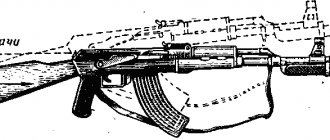In the good old Star Trek movie, Captain Kirk and his crew never left the ship without their reliable phasers. One of the coolest things about these weapons was the "stun" feature, unless the creatures were completely out of control (as was often the case) , the Enterprise team always stunned their opponents by rendering them temporarily unconscious rather than killing them. We're still on the path to these futuristic weapons, but millions of police officers, soldiers and ordinary citizens do carry real-time stun weapons to protect against personal attacks. Like the fictional Star Trek phasers, these devices are designed to temporarily incapacitate a person without any long-term damage. In this article, we'll learn how stun guns and Taser guns do this amazing job. While these weapons are by no means absolute, they can save lives in certain situations.
Our body's electrical signal transmission system
We tend to think of electricity as a harmful force to our bodies.
If lightning strikes you or you stick your finger into an electrical outlet, the current can shock or even kill you. But in small doses, electricity is harmless. In fact, it is one of the most important elements of your body. You need electricity to do anything. For example, if you want to make a sandwich, your brain sends electricity through a nerve cell to the muscles in your arm. The electrical signal tells the nerve cell to release a neurotransmitter, a communication chemical, into the muscle cells. This suggests that the muscles contract or relax in just the right way to make the sandwich. When you pick up a sandwich, sensory nerve cells in your hand send an electrical message to your brain telling you what the sandwich is. When you bite into it, your mouth sends signals to your brain to tell you how good it is. A wide range of stun weapons are used today. The three most popular devices are the standard contact stun gun, the Taser stun gun, and gas cartridges, which have their own advantages and disadvantages.
Classes of stun guns and damage caused
Stun guns with knockout effect.
- Udar-2U+
The most popular knockout EShO model. It is effective even against an attacker in winter clothes. Very often available for equipping private security companies.
Udar-2U+
- Pro-Paralyzer
Just as compact and lightweight as Udar 2U+. Size 165*45*20 mm, weight only 210 grams. Both stun guns have advanced functionality in the form of a flashlight and a very loud sound effect. This sound alone can sometimes scare away, for example, a dog.
Strike Pro Paralyzer
Contact stun guns
The use of this type of EShO is possible only in contact with the body of the attacker. For successful use, the shocker body had to be made of impact-resistant plastic, and the electrodes had to be as long as possible.
In addition, it is important how the stun gun fits in the hand and therefore a curved shape or an ESA in the form of a baton is most preferable. Although rectangular models are more suitable for concealed carry.
See also the article Police baton and its types
Contact-remote or shooting stun guns-paralyzers with a knockout effect
Shooting stun guns with a knockout effect can hit an attacker from a short distance, for which a pair of electrodes is fired like a harpoon. In this case, the electric shock is transmitted through the wires. In addition to the usual design el. stun guns have special cartridges that are used to fire.
Shooting Taser stun gun
The characteristics of the shocker are impressive: a distance of 4-5 meters and 100% efficiency.
Contact or contact-remote
Contact ESAs are most optimal for use in confined spaces. However, if the attacker has a weapon, then it is much better to have a contact-remote weapon.
It is important to understand that there is no universal weapon. Therefore, contact models are better suited for protection against dogs, and contact-remote devices are better suited for protection against criminals.
Contact stun gun-flashlight OSA-1312 Lightning
The most powerful shooting stun gun "BTER"
DESHU PDG-S5 (pistol-shaped stun gun)
Shocker pistol "Thunder"
This is exactly what the list of the most popular electroshock devices (ESD) common in our country looks like.
Advantages of a stun gun
- minimum requirements for the buyer: reaching 18 years of age and no need to obtain a special permit;
- it is difficult to exceed the limits of permissible self-defense;
- selective impact of electric shock on a criminal or attacker;
- compactness and ease of wearing;
- accessibility and ease of use.
Legal standards
The laws regarding stun guns are reflected in various laws, orders and regulations. However, Art. 13 Federal Law “On Weapons”, which states that combat shockers are classified as self-defense weapons.
In Art. 6 of the same law prohibits the purchase and use of imported stun guns. For violating such a ban, the violator may incur administrative liability (a fine of 2,000 rubles).
The use of a shocker must be correlated with a real threat, otherwise responsibility for exceeding the limits of necessary self-defense cannot be avoided. For the legal use of ESD, it is necessary to purchase models with a quality certificate that have been tested in accordance with the requirements of GOST and the recommendations of departmental orders of the Ministry of Health and the Ministry of Internal Affairs of the Russian Federation.
Shooting stun guns Taser
One popular variation on the traditional stun design is the Taser pistol. Shooting stun guns operate in the same way as regular stun guns, except that the two charging electrodes are not permanently connected to the body. Instead, they are located at the ends of a long conductive wire attached to the gun's electrical circuit. Pulling the trigger opens an open cartridge of compressed gas inside the gun. The expanding gas creates pressure behind the electrodes, propelling them through the air attached to the wires running behind them.
The electrodes are attached with small burrs so that they grip the attacker's clothing. When the electrodes are attached, the current travels down the wires into the attacker, stunning them in the same way as a regular stun gun.
The main advantage of this design is that you can stun attackers from a greater distance (usually 4-6 meters). The downside is that you only get one shot - you have to rewind and re-pack the electrode wires and load a new gas cartridge every time you shoot.
Tasers are only one way to conduct current over long distances. In the next section, we'll look at a relatively new long-range stun weapon that doesn't use any wires at all.
Stun
Companies that make stun guns indicate that the weapon should be used conservatively, only for self-defense or to incapacitate an uncontrollable person. Unfortunately, stun guns are commonly used as torture devices in many parts of the world.
Amnesty International reports that a number of governments regularly use stun weapons to extract confessions from political prisoners (including the US). These officials know that electrical torture leaves less evidence than many other methods. The shock from a stun weapon is extremely painful, but it leaves no obvious wound. So while stun guns can be relatively safe weapons when used correctly, they can be quite dangerous in the wrong hands.
Thus, different parts of your body use electricity to communicate with each other. It's actually a lot like the telephone system or the Internet. Specific patterns of electricity are transmitted along lines to deliver recognizable messages.
Disturbance in the transmission of electrical signals in our body
The main idea of a stun gun is to disrupt this communication system. Stun guns generate a high-voltage, low-current electrical charge. In simple terms, this means that the charge makes a lot of impacts, but not much. When you use a stun gun on an attacker and hold the trigger, the charge is transferred into the attacker's body. Since it has a fairly high voltage, the charge will pass through heavy clothing and skin. But due to the 3 milliamp current, the charge is not intense enough to damage the attacker's body unless applied for long periods of time. However, it throws a lot of confusing information into the attacker's nervous system. This leads to several things:
- The electric discharge of the stun gun is combined with electrical signals from the attacker's brain. This is similar to introducing an external current into a telephone line: the original signal is mixed with random noise, making it difficult to decipher any messages. When the stun gun wears off, the attacker has a very hard time telling his muscles to move, and he may become confused and unbalanced. He's temporarily paralyzed, temporarily.
- The current can be generated at a pulse frequency that mimics the body's own electrical signals. In this case, the current will force the attacker's muscles to do a lot of work in a short period of time. But the discharge does not direct the work towards any specific movement. Such useless muscle work will do nothing but deplete the attacker's energy reserves and greatly weaken him to continue his illegal actions.
Basically, that's all it takes to incapacitate a person with a stun gun - you apply electricity to the person's muscles and nerves. And since there are muscles and nerves around the body, it doesn't really matter where you attack the attacker. The effectiveness of the stun varies depending on the specific stun gun model, the attacker's body size, and his nervous system. It also depends on how long you use the stun gun on your attacker. If you use the stun gun for half a second, a painful jolt will hit the attacker. If you use it for one or two seconds, he should experience muscle spasms and become dazed. And if you force him for more than three seconds, he will become unbalanced and disoriented and may lose muscle control. Certain attackers with certain physiology may continue to resist despite any shock.
Stunner device for self-defense
Under the shocker body, in addition to the batteries, there is a quenching capacitor, and electric current is supplied through the dioid bridge. This is what the simplest scheme looks like, which has various improvements and additions. The most common of them is a flashlight, which is available on almost every model.
Internal structure of the stun gun
Switching to combat mode occurs by using a special switch that connects a high-voltage stun gun converter, consisting of 2 high-voltage switches, to the battery. The switch connects the LED to the battery through a resistor, which limits the current flow.
Schematic diagram for all types of stun guns
Principle of operation
When switching to combat mode, the high-frequency oscillator converter begins to work, increasing the low voltage of the power supply to 800 volts.
After the capacitor reaches the spark gap breakdown voltage (1000 volts), the charged capacitor is abruptly connected to the primary winding of the output step-up transformer.
The discharge through the primary winding of the output transformer is converted into a high voltage pulse (about 90,000 volts) on its secondary winding.
Into a combat current discharge between the combat electrodes on the shocker body. Discharges are repeated with a frequency from 25 to 400 Hz.
Levels of damage, consequences
Being struck by a stun gun is not dangerous to human life or health. In any case, experimental tests did not reveal such consequences. Depending on belonging to one of three power classes, the following levels of damage can be distinguished:
300
kilovolt has a psychological effect on dogs and little effect on humans
Devices with voltages up to 300 kilovolts have a good psychological effect on dogs and a weak effect on people (numbness of the limbs for up to several minutes)
Stun guns up to 700 kilovolts in a yard of cases cause loss of consciousness, but most often the entire effect is severe pain and numbness of the limbs. Such devices of the second class are often called disorientators.
The most powerful stun guns-paralyzers for self-defense (first class) have a power of up to 900 kilovolts, which leads to loss of consciousness lasting up to 30 minutes when exposed to the nerve centers of the body (artery, solar plexus, etc.)
More electrodes
These days, most stun gun models have two pairs of electrodes: an inner pair and an outer pair. The outer pair, the charging electrodes, are spaced far apart so that current will only flow when the outer conductor is inserted. If current cannot flow through these electrodes, it flows into the inner pair, the test electrodes. These electrodes are close enough that electric current can jump between them. The driving current ionizes air particles in the gap, creating visible sparks and crackling noises. This mode is mainly intended for deterrence: the attacker sees and hears the electricity and knows that you are armed. Some stun guns rely on the element of surprise rather than warning. These models are disguised as umbrellas, flashlights, cigarette packs, cell phones or other everyday items so you can catch your attacker unexpectedly.
These types of stun weapons are popular among ordinary citizens because in most cases they are small, easy to use, and legal. On the other hand, police and military forces tend to use more complex stun gun designs, with larger, higher power outputs.
Industrial shockers
Cattle stun guns are similar in design to civil defense stun guns—both use electric current on two electrodes—but cattle stun guns perform a completely different function. A stun gun uses an electrical charge to incapacitate someone, while a cattle prod uses a charge to cause the animal to move. A discharge from such a shocker causes only pain; it does not have a significant effect on the muscles and nervous system of the body.
The two devices differ mainly in voltage. The voltage in a stun gun is high enough to discharge electricity throughout the body. The lower voltage in cattle shockers only shocks someone at the point of contact.
How to choose and buy a stun gun
In Russia, only stun guns from domestic manufacturers are allowed for use. All foreign models will be considered illegal.
Therefore, the choice must be made from the model range of the following manufacturers:
- JSC "Oberon";
- LLC "Thunder" (shooting stun gun "Thunder");
- OJSC "Research Institute of Steel";
- LLC NPP "Mart";
- "NPO Special Materials".
No permission is required to make a purchase.
The main criterion is ease of use, as well as the types of stun guns and their effect on the target of attack. It makes sense to take a closer look at models with a curved shape, thanks to which the shocker is comfortable to hold during use and the hand does not experience tension.
Classes of stun guns and damage caused
The division of stun guns into classes depends on their voltage and power.
According to GOST R-50940-96, they are divided as follows:
- Power up to 3 W;
- Power up to 2 W;
- Power up to 0.3-1 W.
Liquid stun gun
One of the new products of stun guns is a liquid stun weapon. This device works in the same way as Taser stun guns, except they use a flow of liquid to conduct electricity rather than deploying wires.
The gun is connected to a reservoir of highly conductive liquid, usually a mixture of water, salt and other other conductive elements. When you pull the trigger, electrical current travels from the gun through a stream of fluid to the attacker.
These stun guns have a longer range than a firing Taser, and you can fire them multiple times in a row. However, they tend to be bulkier than Taser stun guns because you need to place a conductive liquid. High-power stun guns operate with vehicle-mounted water cannons, while portable models usually include a water backpack. Many portable units use the same water pressure system as Super Soaker spray guns.
Today, stun weapons are a rapidly growing area of invention. Law enforcement and military forces need non-lethal weapons to subdue aggressors without killing civilian victims. Many citizens who are concerned about their safety but are comfortable with firearms are looking for a reliable "gun safety" gun. As this technology develops, the prospect of Star Trek phasers no longer seems so fantastic.











